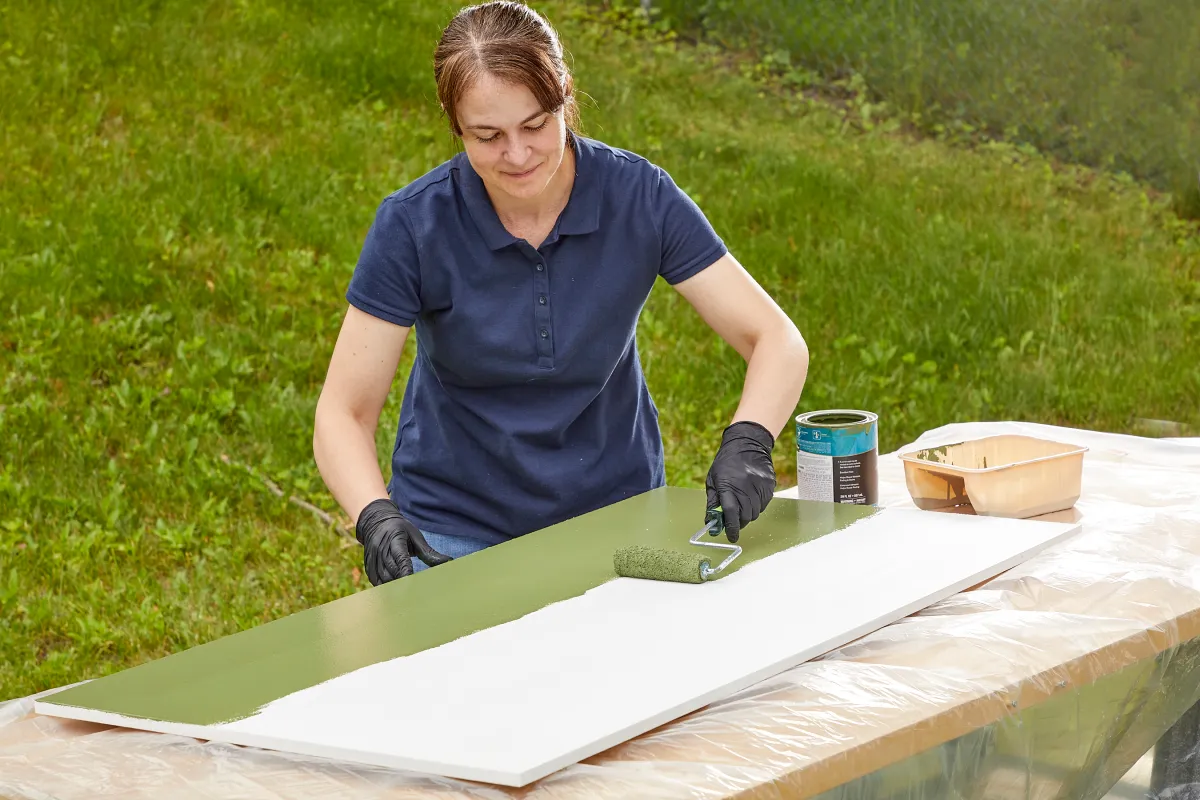Table of Contents
Medium-Density Fiberboard (MDF) is a popular material for furniture, cabinetry, and DIY projects due to its affordability and smooth surface. However, painting MDF requires proper preparation and technique to achieve a professional finish. In this guide, we’ll walk you through how to paint MDF effectively, ensuring long-lasting and stunning results.
Understanding MDF and Its Characteristics
Before diving into how to paint MDF, it’s essential to understand the material and why it requires special attention.
What is MDF?
MDF is an engineered wood product made from compressed wood fibers and resin. Unlike natural wood, it lacks a grain, making it smooth and uniform. However, MDF is highly porous and prone to swelling when exposed to moisture, which is why proper sealing and priming are crucial before painting.
Benefits of Painting MDF
- Customization: Paint allows you to match MDF furniture or décor to any color scheme.
- Protection: A well-painted surface seals the MDF, preventing moisture damage.
- Enhanced Aesthetics: A smooth, painted finish gives MDF a high-end look.
Preparing Your MDF for Painting
Proper preparation is the key to a flawless paint job. Skipping this step can lead to peeling, uneven coverage, or moisture damage.
Cleaning and Sanding the Surface
- Clean the MDF: Wipe the surface with a damp cloth to remove dust and debris. Avoid soaking the MDF, as it can swell.
- Light Sanding: Use 120-150 grit sandpaper to smooth any rough edges and create a better surface for primer adhesion.
- Remove Dust: After sanding, wipe the MDF with a tack cloth or a slightly damp rag to eliminate residual dust.
Choosing the Right Primer
Since MDF is porous, a high-quality primer is essential to seal the surface and prevent paint absorption. Opt for:
- Oil-based primer (best for sealing)
- Water-based primer with a built-in sealer (for easier cleanup)
Apply a thin, even coat and let it dry completely before sanding lightly with 220-grit sandpaper for a smooth finish.
The Painting Process
Now that your MDF is prepped, it’s time to explore how to paint MDF for a professional look.
Selecting the Best Paint for MDF
- Latex (Water-Based) Paint: Easy to work with, quick-drying, and low odor.
- Oil-Based Paint: Durable and resistant to wear, but requires longer drying time.
- Acrylic Paint: Great for detailed work and dries quickly.
For furniture or high-traffic areas, a satin or semi-gloss finish is ideal for durability and easy cleaning.
Techniques for Applying Paint
- Brush Painting:
- Use a high-quality synthetic brush for smooth strokes.
- Apply in thin, even layers to avoid drips.
- Roller Application:
- A foam roller works best for large, flat surfaces.
- Roll in one direction to maintain consistency.
- Spray Painting:
- Provides the smoothest finish but requires proper ventilation.
- Hold the can 8-12 inches away and apply in light coats.
Allow each coat to dry completely before applying the next (usually 2-3 coats for full coverage).
Finishing Touches
Sealing and Protecting Your Painted MDF
To enhance durability, especially for furniture or kitchen cabinets, apply a clear topcoat:
- Polyurethane (water or oil-based): Adds a protective layer against scratches and moisture.
- Polycrylic: A water-based alternative that dries clear and resists yellowing.
Lightly sand between coats with 320-grit sandpaper for an ultra-smooth finish.
Common Mistakes to Avoid When Painting MDF
Learning how to paint MDF also means knowing what not to do:
- Skipping Primer: Leads to uneven paint absorption and poor adhesion.
- Using Too Much Water: Causes MDF to swell and warp.
- Rushing Drying Times: Results in smudges and imperfections.
- Neglecting Edge Sealing: MDF edges absorb more paint seal them thoroughly.
Conclusion: Mastering How to Paint MDF for Lasting Results
Painting MDF doesn’t have to be intimidating. By following these steps proper preparation, priming, painting, and sealing you can achieve a flawless, durable finish. Whether you’re refinishing furniture or tackling a DIY project, knowing how to paint MDF correctly ensures professional-looking results that last.







